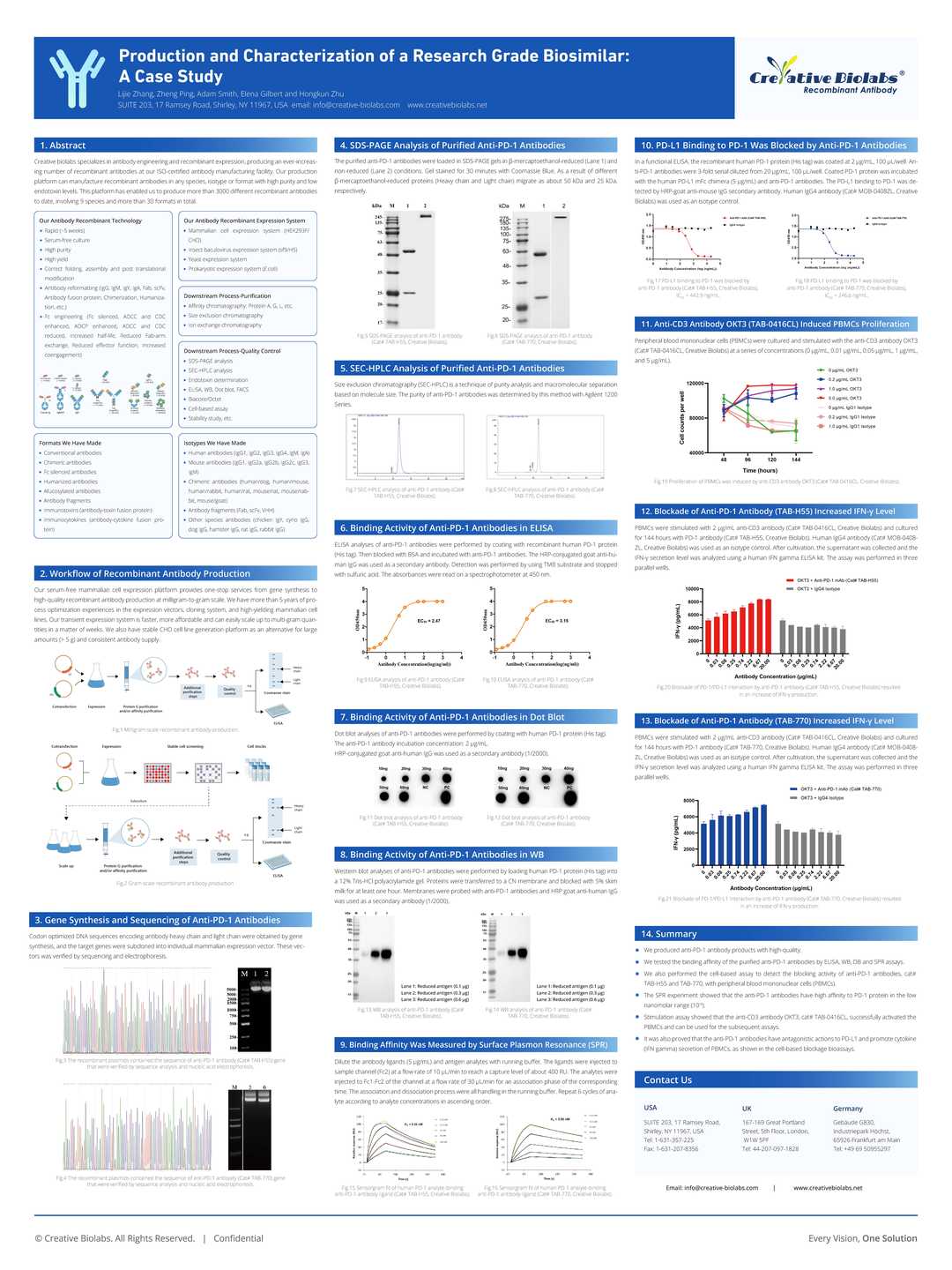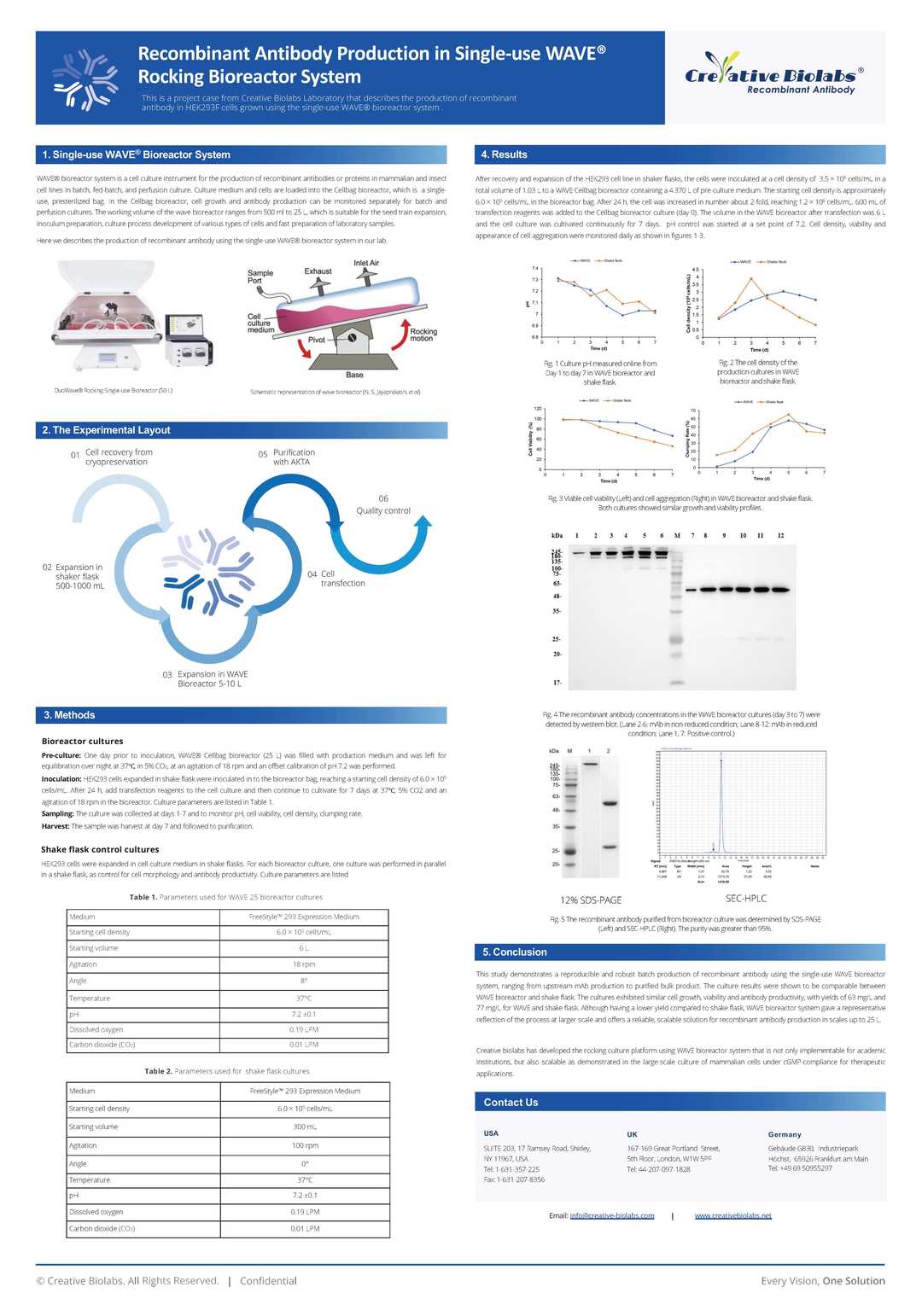Anti-Human CD2 Recombinant Antibody (BTI-322)
CAT#: TAB-110CL
Recombinant Rat monoclonal antibody expressed in CHO binding to Human CD2. BTI-322 is a monoclonal anti-CD2 antibody, for treatment of steroid-resistant acute graft-versus-host disease.














Specifications
- Host Species
- Rat
- Derivation
- Rat
- Type
- Antibody
- Species Reactivity
- Human
- Applications
- FuncS
- Related Disease
- Graft versus host disease
Product Property
- Purity
- >95% as judged by SDS-polyacrylamide gel electrophoresis
- Storage
- 4°C or -20°C, avoid repeated freezing and thawing.
Applications
- Application Notes
- This antibody has been tested for use in Functional Assay.
Target
Customer Review
There are currently no Customer reviews or questions for TAB-110CL. Click the button above to contact us or submit your feedback about this product.



Q&As
-
Is it possible to research autoimmune illnesses with BTI-322?
A: Yes, BTI-322 is useful for exploring how CD2 signaling affects autoimmune diseases. It helps you understand the role of T-cells in autoimmunity and might point to new treatment options.
-
How does BTI-322 fit into the immunotherapy for cancer?
A: BTI-322 helps study how activating T-cells via CD2 can fight tumors. This research provides valuable insights for creating new cancer immunotherapies that harness the body's own immune system.
-
How is the establishment of immunological synapses studied by BTI-322?
A: BTI-322 binds to CD2, aiding the formation of the immune synapse between T-cells and antigen-presenting cells. This reveals important details about T-cell activation and communication.
View the frequently asked questions answered by Creative Biolabs Support.
Cite This Product
To accurately reference this product in your publication, please use the following citation information:
(Creative Biolabs Cat# TAB-110CL, RRID: AB_2819086)
Submit Your Publication
Published with our product? Submit your paper and receive a 10% discount on your next order! Share your research to earn exclusive rewards.
Downloadable Resources
Download resources about recombinant antibody development and antibody engineering to boost your research.
Product Notes
This is a product of Creative Biolabs' Hi-Affi™ recombinant antibody portfolio, which has several benefits including:
• Increased sensitivity
• Confirmed specificity
• High repeatability
• Excellent batch-to-batch consistency
• Sustainable supply
• Animal-free production
See more details about Hi-Affi™ recombinant antibody benefits.
Datasheet
MSDS
COA
Certificate of Analysis LookupTo download a Certificate of Analysis, please enter a lot number in the search box below. Note: Certificate of Analysis not available for kit components.
See other products for "CD2"
Select a product category from the dropdown menu below to view related products.
| CAT | Product Name | Application | Type |
|---|---|---|---|
| MOB-1136z | Mouse Anti-CD2 Recombinant Antibody (clone 23B6) | ELISA, FC, IF, IHC, IP, FuncS | Mouse IgG2b, κ |
| FAMAB-1620CQ | Mouse Anti-CD2 Recombinant Antibody (clone OX34) | Block, FC | Mouse IgG2a |
| ZG-0087J | Mouse Anti-CD2 Recombinant Antibody (clone 3F3) | IHC-P, IF | Mouse IgG |
| ZG-0088J | Mouse Anti-CD2 Recombinant Antibody (ZG-0088J) | IHC-P, IF | Mouse IgG |
| ZG-0089J | Mouse Anti-CD2 Recombinant Antibody (ZG-0089J) | IHC-P, IF | Mouse IgG |
| CAT | Product Name | Application | Type |
|---|---|---|---|
| IAB-B074(A) | Recombinant Anti-human CD2 Intrabody [(D-Arg)9] | PCA, WB, FuncS | scFv-(D-Arg)9 |
| IAB-B074(G) | Recombinant Anti-human CD2 Intrabody [+36 GFP] | ELISA, IF, Neut, FuncS | scFv-(+36GFP) |
| IAB-B074(T) | Recombinant Anti-human CD2 Intrabody [Tat] | ELISA, Neut, FuncS | scFv-Tat |
| CAT | Product Name | Application | Type |
|---|---|---|---|
| TAB-104 | Anti-Human CD2 Recombinant Antibody (TAB-104) | ELISA, IP, FC, FuncS, Neut, IF, ICC | IgG1 - kappa |
| CAT | Product Name | Application | Type |
|---|---|---|---|
| NEUT-295CQ | Mouse Anti-CD2 Recombinant Antibody (clone CBL975) | WB, FC, Neut, IHC | Mouse IgG1, κ |
| NEUT-296CQ | Mouse Anti-CD2 Recombinant Antibody (clone RPA-2.10) | WB, Neut, FC, IHC, IHC-Fr | Mouse IgG1, κ |
| NEUT-297CQ | Mouse Anti-CD2 Recombinant Antibody (clone TS1/8) | Neut, FC, CyTOF | Mouse IgG1 |
| NEUT-299CQ | Rat Anti-CD2 Recombinant Antibody (clone 12-15) | Neut, FC, IP | Rat IgG1, κ |
| NEUT-300CQ | Rat Anti-CD2 Recombinant Antibody (clone RM2) | FC, FuncS, Neut | Rat IgG2b, λ |
| CAT | Product Name | Application | Type |
|---|---|---|---|
| NEUT-298CQ | Mouse Anti-CD2 Recombinant Antibody (clone TS218) | Block, FC, IP, WB | Mouse IgG1, κ |
| NEUT-301CQ | Rat Anti-CD2 Recombinant Antibody (clone RM2-5) | FC, IP, Block, Costim | Rat IgG2b, λ |
| CAT | Product Name | Application | Type |
|---|---|---|---|
| MOR-0542 | Hi-Affi™ Rabbit Anti-CD2 Recombinant Antibody (clone DS542AB) | WB, IHC, ICC, IP | Rabbit IgG |
| CAT | Product Name | Application | Type |
|---|---|---|---|
| HPAB-0019-LSX-S(P) | Human Anti-CD2 Recombinant Antibody (clone 35.1); scFv Fragment | ELISA | Mouse scFv |
| CAT | Product Name | Application | Type |
|---|---|---|---|
| HPAB-0019-LSX-F(E) | Human Anti-CD2 Recombinant Antibody (clone 35.1); Fab Fragment | ELISA | Mouse Fab |
| CAT | Product Name | Application | Type |
|---|---|---|---|
| AFC-TAB-104 | Afuco™ Anti-CD2 ADCC Recombinant Antibody, ADCC Enhanced (AFC-TAB-104) | ELISA, IP, FC, FuncS, Neut, IF | ADCC enhanced antibody |
| CAT | Product Name | Application | Type |
|---|---|---|---|
| VS-0424-XY48 | AbPlus™ Anti-CD2 Magnetic Beads (TS218) | IP, Protein Purification |
| CAT | Product Name | Application | Type |
|---|---|---|---|
| VS-1024-XY84 | Mouse Anti-NHP CD2 Recombinant Antibody (clone RPA-2.10) | IF, FC | Mouse IgG1, kappa |
| CAT | Product Name | Application | Type |
|---|---|---|---|
| VS-0225-XY21 | CytoStream™ Mouse Anti-CD2 Recombinant Antibody (clone RPA-2.10) | FC | Mouse IgG1, kappa |
| VS13-YC155 | CytoStream™ Rabbit Anti-CD2 Recombinant Antibody (VS13-YC155) | WB, IHC-P, ICC, IF, IP, FC | Rabbit IgG |
| CAT | Product Name | Application | Type |
|---|---|---|---|
| VS-0425-FY80 | Mouse Anti-CD2 (clone 35.1) scFv-Fc Chimera | ELISA, Inhib | Mouse IgG1, scFv-Fc |
| CAT | Product Name | Application | Type |
|---|---|---|---|
| VS-0425-YC276 | Recombinant Anti-CD2 Vesicular Antibody, EV Displayed (VS-0425-YC276) | ELISA, FC, Neut, Cell-uptake |
| CAT | Product Name | Application | Type |
|---|---|---|---|
| VS-0525-XY1134 | Anti-CD2 Immunohistochemistry Kit | IHC | |
| VS-0525-XY1135 | Anti-Mouse CD2 Immunohistochemistry Kit | IHC |
Popular Products

Application: IF, IP, Neut, FuncS, ELISA, FC, WB

Application: ELISA, FC, IP, FuncS, IF, Neut, ICC

Application: IP, IF, FuncS, FC, Neut, ELISA, ICC

Application: ELISA, FC, IP, FuncS, IF, Neut, ICC

Application: ELISA, FC, IP, FuncS, IF, Neut, ICC

Application: IP, IF, FuncS, FC, Neut, ELISA, IHC

Application: WB, ELISA, FC, IHC, IP

Application: ELISA, FC, IF, WB

Application: ELISA, IHC, FC, IP, IF, Inhib

Application: ELISA, WB, FC, IHC, IP
For research use only. Not intended for any clinical use. No products from Creative Biolabs may be resold, modified for resale or used to manufacture commercial products without prior written approval from Creative Biolabs.
This site is protected by reCAPTCHA and the Google Privacy Policy and Terms of Service apply.

























-3-1.png)





